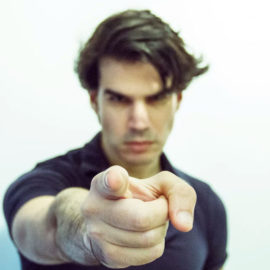

This article is an excerpt from the Shortform book guide to "The Righteous Mind" by Jonathan Haidt. Shortform has the world's best summaries and analyses of books you should be reading.
Like this article? Sign up for a free trial here .
Does the harm principle of ethics have universal merit? What is the principle’s counterargument?
The harm principle, introduced by John Stuart Mill in 1859, states that the only way that anyone should exercise power in a civilized society is to prevent harm. This is the basis for ethics in the secular West. However, taking the rest of the world into consideration opens up a different perspective. This is put forth by Jonathan Haidt in his book The Righteous Mind.
Read more to learn about differing views regarding the harm principle.
The Harm Principle: The Rationalist Argument
While developing his theories about the six stages of moral judgment, psychologist Lawrence Kohlberg noticed that children who were given more chances to “role take”—step into another’s shoes and see the situation from his viewpoint—progressed through the moral stages more quickly. Kohlberg reasoned that hierarchy and submission to authority hindered a child’s moral development by keeping him from stepping into another’s shoes and resolving conflict independently. In diminishing the importance of respecting authority figures and traditional social structures, Kohlberg set the stage for decades of subsequent research that assumed that morality was unrelated (and even in opposition to) these values.
Kohlberg’s student Elliot Turiel developed a test to figure out how quickly children were progressing through Kohlberg’s six steps. Turiel presented young children in Western societies with two examples—a child not wearing a school uniform and a child pushing another off of a swing. Kids as young as five answered that it was okay for a child not to wear a uniform if the teacher said it was alright, but that it was not okay for a child to push another one, even if a teacher said it was alright.
Building on Kohlberg’s theories, Turiel thus argued that children who are able to make choices for themselves develop a morality that’s centered around reducing harm—if an action doesn’t cause harm, it’s not immoral.
This argument has some merit if we’re considering only the secular West. For well-educated, secular Westerners, ethics does center around “the harm principle,” introduced by John Stuart Mill in 1859: The only way that anyone should exercise power in a civilized society is to prevent harm.
The Harm Principle: The Counterargument
The issue is, almost all psychology research (including Kohlberg’s) is conducted on people from the secular West. This leads some scientists to believe that the moral code in these places is the moral code everywhere. We’ll call the secular Westerners WEIRD: Western, educated, industrialized, rich, and democratic. These WEIRD people, as Haidt proved, are often statistical outliers. As we’ve discussed, people who are WEIRD are much more individualistic than others, which affects their perceptions of the world—they even see objects in their environment as individual, where others see them as connected. For example, when WEIRD people see a drawing of a square, they see four lines; when non-WEIRD people look at the square, all they see is a complete square.
Philosophers who are WEIRD like Kant and Mill have helped to create societies that are individualistic (they prioritize the individual) and universalist (they believe in the existence of universal truths). Their philosophies are based on generalizations about human nature.
In contrast, philosophers who are not from WEIRD societies don’t include proclamations about how humans behave—non-WEIRD writers like Confucius offer lessons on how to behave in specific relationships or situations, but they don’t offer universal rules that apply to everyone in the world.
The view of WEIRD philosophers makes moral judgment simple: An action is either harmful or it’s not. But in practice, morality isn’t this cut and dried—particularly beyond the Western world, but in secular Western societies as well. In addition to preventing harm, moral judgments may serve to order society or resolve tension within a group.
Moral frameworks like religion order society. For example, many communities that have never had contact with each other believe in witchcraft. Either this is a coincidence, witches actually do exist, or (the likeliest explanation) these societies all developed a similar understanding of how individuals should interact with one another and use witchcraft to root out people they believe to be bad actors. Members of these communities are careful to behave morally for fear that their neighbors will call them a “witch” and the group will shun them. This demonstrates how the moral frameworks arising from supernatural and religious beliefs impose order on society.
In the same way, moral frameworks often express and resolve tension within a group by creating competition among other groups. For example, a tribe in the Philippines called the Ilongot has young men practice beheadings to gain honor. Many young men murder people with no connection to their tribe. This might seem puzzling at first, but most murders happen because when friction arises within the group, they’ll go off “hunting”—beheading outsiders—which strengthens the bonds within the group.
Westerners also follow moral rules that have little to do with justice or preventing harm. The harm principle isn’t always a factor. For example, liberals call conservatives prudes for saying that anything other than missionary sex in wedlock is a sin. Conservatives make fun of liberals for the belief that what they eat, from free-range eggs to fair-trade chocolate, is a moral concern. Neither non-missionary sex in wedlock nor picking up whatever you want at the grocery store has much to do with reducing harm. Yet, these issues are still legislated and understood as moral in the United States.
In truth, in the U.S., the social order is also the moral order, as in sociocentric societies—it’s just based on a much more individualistic framework: When the individual comes first, any rule that impedes the individual, or personal freedom, can be questioned.
All of these disparate societies make it clear that, in fact, the modern U.S. and Western Europe are historical exceptions in their narrow definition of morality as that which prevents harm. Furthermore, Westerners are hypocritical, extending their own morality beyond this definition while disdaining other societies that do the same. If every society has moral rules that are unrelated to preventing harm, then the rationalist argument—that learned morality is only about preventing harm—must be flawed.
Regardless of your take on the harm principle, it’s beneficial to understand the various perspectives.

———End of Preview———
Like what you just read? Read the rest of the world's best book summary and analysis of Jonathan Haidt's "The Righteous Mind" at Shortform .
Here's what you'll find in our full The Righteous Mind summary :
- Why we all can't get along
- How our divergent moralities evolved
- How we can counter our natural self-righteousness to decrease political divides






